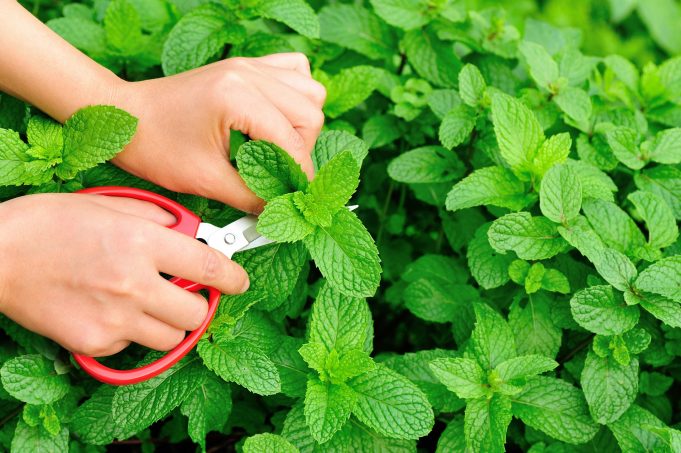Grow Mint and Reap its Health Benefits
Mint or pudina is more than just a recipe ingredient. It has a host of health benefits as well.
Mint takes top place as a salad dressing, as a garnish and as a supplementary to add zing and flavor to most of the dishes on a menu. Its green leaves give out a fresh look and can perk up any kitchen window. Used chopped or as a ground paste, it gives a freshness to cooking. And the good points do not stop there; mint has a long list of health benefits too. Some of them are:
- Good for indigestion: The antioxidants and phytonutrients present in mint relax the stomach muscles. The menthol in it assists the enzymes working on digestion, thereby reducing the occurrence of indigestion and spasms.
- Provides relief for cough and cold: Brimming with anti-bacterial and anti-inflammatory properties, mint helps to relieve the inflammation of the respiratory tract when infected by cold and cough. The strong smell of mint helps to open up the nasal passages and promotes easy breathing. Inhaling the fumes rising from adding a drop of mint extract to warm water brings relief to the nose and throat and reduces cough.
- Helps to fight oral infections: The anti-bacterial and anti-inflammatory properties of mint are great for oral health too. Mint kills the bacteria causing tooth decay, stops bad breath and keeps the mouth clean.
- Relieves morning sickness in pregnancy: Smelling a few crushed mint leaves or chewing on them every morning will help expecting mothers to overcome morning sickness. Mint reduces nausea by activating the stomach enzymes required for digestion.
- Eases menstrual cramps and pain: Mint purifies the blood and has an anti-spasmodic effect. A cup of mint tea relieves menstrual pain, cramps and any nausea that occurs during the period.
- Aids in preventing allergies and asthma: The rosmarinic acid in mint is a powerful antioxidant that blocks allergy-inducing leukotrienes. This is helpful for relieving allergic rhinitis and asthma.
- Increases immunity: Mint is loaded with calcium, vitamin C, D, E and B and phosphorous, which act together to boost the immune system of the body and protect it from infections and inflammation.
Mint oil is also used in aromatherapy to deal with stress and depression. You can have all the benefits of this wonder herb at your beck and call by growing mint in your kitchen garden. The method is easy and the results fast.
How to grow mint
- Get a mint cutting, mint seedling or a runner from an existing plant.
- Get a pot or container which is 12 to 16 inches wide and has a water-retention polymer in the soil. Plant the mint cuttings in well-spaced intervals just below the soil.
- Choose a spot which catches the morning sun and partial afternoon shade.
- Water the mint just enough to keep the soil moist. Do not allow the soil to dry.
- Trim the plants regularly as it will contain the height and keep the leaves bushy around the sides of the plant.
- Replant some of the mint every few years as mint grows and spreads all over the pot making the roots cramped. The scent and flavor will also continue to remain fresh and strong this way.
- Watch out for pests on and below the mint leaves. Spray them with a garden hose or wash the leaves with insecticidal soap.













































